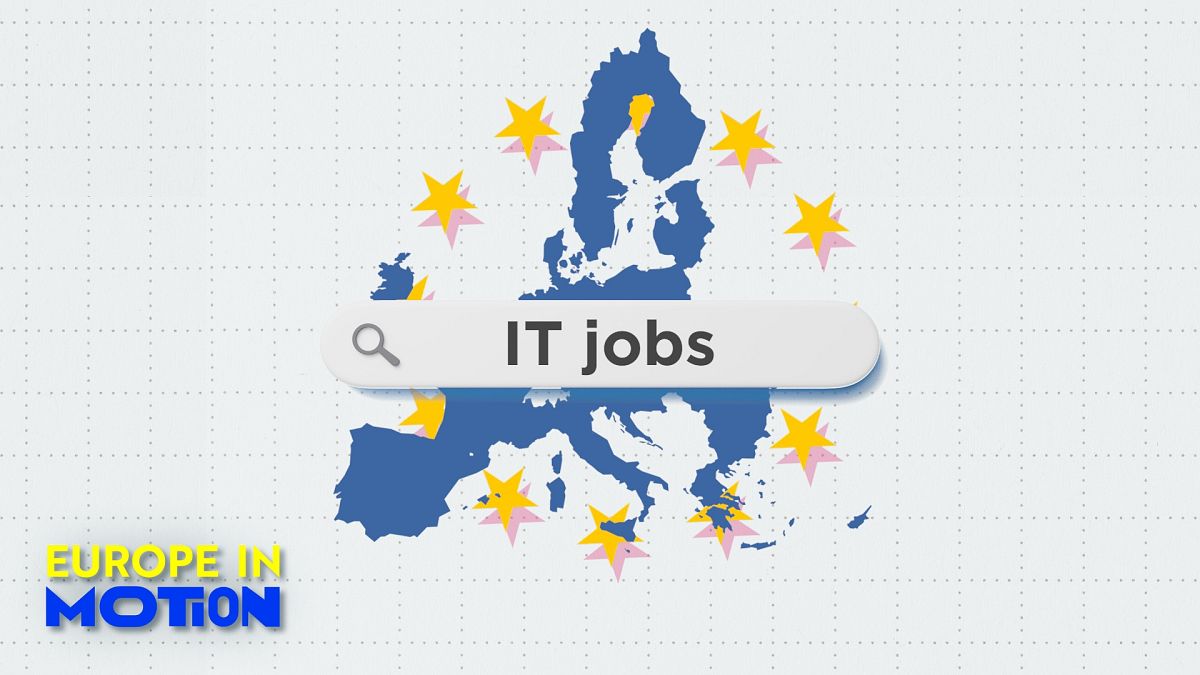After a disclaimer that nothing we’d hear tonight is financial or legal advice, followed by a 40-minute interview with former President Donald Trump — which touched on the apparent attempt on his life at a Florida golf course, the border, the “evil forces” conspiring against him, and his granddaughter’s foreign language skills — and subsequent conversations with Trump’s sons and associates, the X Space dedicated to announcing Trump’s “crypto platform” more or less got to the point.
Technology
Trump is hawking tokens for a crypto project he still hasn’t explained
/cdn.vox-cdn.com/uploads/chorus_asset/file/25531782/STK175_Trump_Crowd_Lines_Glitches_shooting.jpg)
The goal of World Liberty Financial, Trump’s new decentralized finance project, is to drive “the mass adoption of stablecoins and decentralized finance,” according to a statement posted on its X account earlier this month. But over the course of the lengthy “announcement” on Monday night, neither Trump nor any of his business partners explained how exactly that would work.
Finally, more than two hours into the stream, Corey Caplan — the co-founder of the decentralized lending platform Dolomite, who is working as an adviser for Trump’s project — said World Liberty Financial would “sell and otherwise distribute governance tokens called WLFI.” The token sales will be limited to “certain persons who would be eligible to participate in transactions that are exempt from registration under US federal securities law,” meaning only accredited investors under Regulation D and Regulation S can buy the token. Three people with knowledge of the project told the New York Times that World Liberty Financial has been pitched as a borrowing and lending platform.
Earlier in the stream, a bevy of Trump relatives and associates described World Liberty Financial as a way of helping the “huge, approachable class of people who have either been debanked … or they just don’t have a bank that they can go to, and they don’t have a bank that will listen to them.”
The details started to emerge a little over an hour and a half into the announcement, when two of Trump’s other business partners — Chase Herro and Zak Folkman — revealed some details of the “crypto platform” Trump and his sons have been teasing for over a month. World Liberty Financial will “onboard as many people through simple products where they can actually start to earn yield on their assets,” said Folkman, the co-founder of Dough Finance, a crypto platform that was hacked earlier this year.
“I think crypto is one of those things we have to do whether we like it or not”
Trump first announced the project in August. “For too long, the average American has been squeezed by the big banks and financial elites. It’s time we take a stand—together. #BeDefiant,” he posted on Truth Social. Aside from a link to a Telegram channel, the post included no other details about the platform or what it entailed. The uncertainty around the announcement has let opportunists — and hackers — take advantage of Trump’s fans. Earlier this month, hackers breached the X accounts of Tiffany Trump and Lara Trump, on which they posted links to a fake World Liberty Financial website announcing that the venture had launched.
Donald Trump Jr. and real estate developer and landlord Steve Witkoff, both of whom are also involved in World Liberty Financial, framed the project as a way of helping underserved and unbanked communities.
“If you want to borrow money today, you have to be almost anointed. You have to be a member of the privileged class,” said Witkoff, who in 2017 purchased the Fontainebleau Resort Las Vegas for $600 million.
Don Jr., who described himself as “still a neophyte” in the crypto space, said decentralized finance can help people who have been excluded from traditional financial markets. The announcement played up a popular fear among the crypto crowd: being debanked, potentially as punishment for political dissent.
“There was a time period where the Trumps, we could’ve picked up the phone and called and CEO of any bank,” Don Jr. said. “We went from being people who would have been the elite in that world to just being, like, totally canceled.” It’s possible that cancellation has more to do with Trump’s history of lying about his wealth or running a scammy for-profit college than it does with his political views.
Despite claims that World Liberty Financial will put “the power of finance back in the hands of the people,” initial reports suggested that its founding token would mostly be distributed to people involved in the project. A white paper obtained by CoinDesk said 70 percent of WLFI would be held by the founding members, team, and service providers.
During the stream, however, Caplan chastised the “fake news media” reports of how the token would be distributed and said approximately 63 percent of the tokens will be sold to the public, while 20 percent would be “reserved for team compensation.”
World Liberty Financial appears to be part of a broader Trump outreach campaign to the crypto community. Trump headlined this year’s Bitcoin Conference in Nashville, Tennessee, where he said he’d never sell the US’s Bitcoin holdings but stopped short of promising to create a strategic Bitcoin reserve. He’s also released four NFT collections, which netted him at least $7.2 million, according to August financial disclosure forms.
It’s evident that Trump, who disappeared from the stream after the first 40 minutes, is the face of a product he knows almost nothing about. He had little to say about cryptocurrency aside from some vague comments about the “very hostile environment” the Securities and Exchange Commission has created for the crypto community — and an admission that politicians know that embracing crypto could help them win voters.
“You’re going to be happy, and you’re going to love your crypto, and as long as you have crypto, you’re happy,” Trump said early in the stream. “I think crypto is one of those things we have to do whether we like it or not.”

Technology
North Korea linked to crypto heists of over $650 million in 2024 alone
/cdn.vox-cdn.com/uploads/chorus_asset/file/23587767/acastro_220524_STK428_0003.jpg)
Hackers in North Korea stole a total of $659 million in crypto across several heists in 2024, according to a joint statement issued today by the US, Japan, and South Korea. The report specified five such incidents, like the $235 million theft from the Indian crypto exchange WazirX that is being newly attributed to the Lazarus Group. That organization is estimated to have stolen billions across previous attacks over the last decade, including $625 million stolen from Axie Infinity in 2022.
As recently as September 2024, the United States government observed aggressive targeting of the cryptocurrency industry by the DPRK with well-disguised social engineering attacks that ultimately deploy malware, such as TraderTraitor, AppleJeus and others. The Republic of Korea and Japan have observed similar trends and tactics used by the DPRK.
A warning issued by the FBI last September noted that their methods to gain access for delivering these payloads include “individualized fake scenarios,” such as enticing victims with prospective jobs and business opportunities. All three countries advised businesses in the industry to check out the latest warning to reduce their risk of “inadvertently hiring DPRK IT workers,” as described in this recent report by CoinDesk.
They’ve also used long-time common phishing tactics against employees of crypto firms, such as convincing impersonations of trusted contacts or prominent people of interest in related industries, with realistic photos and information likely lifted from public social media accounts of known connections.
Technology
Hackers claim massive breach of company that tracks and sells Americans' location data

When we talk about data privacy, tech giants like Google and Facebook are often blamed for using personal data to show ads and recommendations. Less discussed are the businesses whose entire business model revolves around collecting your data and selling it to other companies and governments. These companies often operate in legal gray areas, with the consent required to collect user data buried deep in the fine print.
What’s even more concerning is that these data brokers fail to adequately protect the data they collect. Last year, National Public Data made headlines for failing to secure 2.7 billion records of individuals whose data it had harvested. Now, hackers have reportedly stolen data from Gravy Analytics, the parent company of Venntel, which has sold vast amounts of smartphone location data to the U.S. government.
I’M GIVING AWAY THE LATEST & GREATEST AIRPODS PRO 2
Enter the giveaway by signing up for my free newsletter.
A woman working on her laptop (Kurt “CyberGuy” Knutsson)
What you need to know about the breach
Hackers claim to have breached Gravy Analytics, a major location data broker and parent company of Venntel, a firm known for selling smartphone location data to U.S. government agencies. The compromise is massive, including sensitive location data that tracks precise smartphone movements, customer information and even internal infrastructure, according to a 404 Media report.
The hackers are threatening to make the stolen data public. The files contain precise latitude and longitude coordinates of the phone and the time at which the phone was there. Some even indicate what country the data has been collected from.
Hackers have claimed access to Gravy’s systems since 2018. If true, this represents a serious security lapse on the company’s part. It is baffling how companies that collect and sell user data (a practice that arguably shouldn’t be allowed in the first place) failed to protect it from being leaked.
404 Media also suggests that the hackers gained deep access to the company’s infrastructure, including Amazon S3 buckets and server root access. The exposed customer list reportedly includes major companies like Uber, Apple and Equifax as well as government contractors like Babel Street.

A hacker (Kurt “CyberGuy” Knutsson)
HERE’S WHAT RUTHLESS HACKERS STOLE FROM 110 MILLION AT&T CUSTOMERS
What this breach means for people
This data breach highlights the serious security flaws in the location data industry. Companies like Gravy Analytics and Venntel have been profiting from collecting and selling sensitive location data, often without proper user consent. They’ve prioritized profit over security, and now the privacy of millions is at risk. This data could end up on black markets, endangering individuals, especially those in vulnerable situations, by making them targets for harassment or worse.
The FTC’s recent crackdown on Gravy, announced in December, underscores their negligence. The proposed order will prohibit these companies from selling or using location data, except in specific cases like national security or law enforcement. The implications are worrying. Sensitive locations like schools and workplaces could become easy targets for those with malicious intent.

A person using their cellphone and working on their laptop (Kurt “CyberGuy” Knutsson)
BEWARE OF ENCRYPTED PDFs AS THE LATEST TRICK TO DELIVER MALWARE TO YOU
5 ways to stay safe in the age of data breaches
The Gravy Analytics breach serves as a sobering reminder of the vulnerabilities in the digital age. While it’s impossible to control how every company handles data, you can take steps to minimize your exposure and protect your privacy. Here are five actionable tips to stay safe.
1) Limit app permissions: Many apps request access to location data, contacts and more, even when it’s not necessary for their functionality. Regularly review the permissions for apps on your smartphone and revoke access to anything that feels excessive. For instance, a weather app doesn’t need access to your microphone or camera.
2) Use a VPN: Virtual private networks (VPNs) can mask your IP address and encrypt your internet activity, making it harder for data brokers and hackers to track your online behavior. A good VPN adds an extra layer of security, especially when using public Wi-Fi networks. For the best VPN software, see my expert review of the best VPNs for browsing the web privately on your Windows, Mac, Android and iOS devices.
3) Opt out of data sharing where possible: Some companies allow you to opt out of having your data collected or shared. Services like Your Ad Choices and privacy settings within platforms like Google can help you reduce the amount of data collected. Check for opt-out options with any apps or services you use frequently.
4) Avoid free apps that monetize data: Free apps often generate revenue by selling user data. Instead, consider paid versions of apps that explicitly prioritize privacy. Research the company behind the app to understand its data handling policies before downloading.
5) Invest in data removal services: Data removal services can help you regain some control over your personal information by identifying and removing it from people-search websites, data broker platforms and other online databases. Check out my top picks for data removal services here.
WHAT TO DO IF YOUR BANK ACCOUNT IS HACKED
Kurt’s key takeaway
Companies that collect and sell user data pose a significant threat to privacy, and when they fail to protect this data, it often ends up in the hands of even worse actors. Cybercriminals, and even some governments, can exploit this information to target individuals. It is crucial to implement stringent repercussions for these companies when they fail in their duty to safeguard user data. A mere slap on the wrist is not enough. We need real accountability to deter negligence and protect individual privacy rights.
Should companies face stronger penalties for failing to protect personal data? Let us know by writing us at Cyberguy.com/Contact.
For more of my tech tips and security alerts, subscribe to my free CyberGuy Report Newsletter by heading to Cyberguy.com/Newsletter.
Ask Kurt a question or let us know what stories you’d like us to cover.
Follow Kurt on his social channels: Answers to the most asked CyberGuy questions:
New from Kurt:
Copyright 2024 CyberGuy.com. All rights reserved.
Technology
DJI Flip official: the unique bicycle spoke folding drone starts at $439
/cdn.vox-cdn.com/uploads/chorus_asset/file/25830815/DJI_20241230154703_0676_D.JPG)
At $439, the DJI Flip could be a good starting point for people who don’t typically buy drones at all. You can unfold it, launch it from your hand with a single button, land it on your hand again, or optionally use joysticks, all while capturing higher quality photos and video than the immediate competition.
In August, my colleague Thomas Ricker told you how DJI rival Hover had changed the game by selling a $349 flying camera that doesn’t require people to learn joysticks; with the $199 DJI Neo, DJI looked poised to muscle in on that in a big way. But the $439 Flip not only lets you launch and film basic dronies, orbits, and follow-me shots from the drone itself, it dramatically increases camera quality, flight stability, battery life (a quoted 31 minutes), and lets you launch it faster. You just won’t be able to fly it FPV like some of us were hoping.
Not only is the Flip the first DJI drone to look like a Star Wars AT-AT walker or a penny-farthing bicycle when folded, it’s also the first to automatically power on when you unfold it, saving two button presses. And when you flip out each of its four spoke-filled full-coverage propeller guards — which DJI says are a first for its folding drones — they join an auto-braking, forward-facing 3D infrared sensor to protect the camera from any front impacts as well.
1/9
And while that camera isn’t quite as impressive as the 1.0-inch type found on DJI’s Osmo Pocket 3, I was impressed by my first results in good light! It’s smaller 1/1.3-inch 4K60 sensor with 4:3 aspect ratio is capable of taking 2.7K vertical video or 48 megapixel stills behind a fast f/1.7 aperture lens. Here are a couple of my unedited early flights, a drone selfie, and a photo, to give you an idea:
Frankly, the DJI Neo — which costs less than half as much — can’t come close to this level of performance; over the same lake and the same park, the Neo couldn’t even maintain a smooth level shot as the breeze blew its lighter frame around, and its images were muddy and washed out by comparison. The Flip has a three-axis gimbal to help maintain that stability. Also, pros can record in 10-bit D-Log M.
But other, pricier DJI drones could offer better performance still, plus true vertical shooting by rotating the gimbal — and it’d be hard to imagine a drone enthusiast picking the Flip instead of waiting to see what DJI’s unannounced Mini 5 might bring to the table.
“There are currently no plans to retire the Mini Series. The DJI Flip is a new entry-level drone series that will be offered alongside the DJI Neo and DJI Mini. Each of these drones are designed to meet the needs of different types of beginners,” DJI spokesperson Daisy Kong confirms to The Verge.
I am continually surprised by how large the Flip is; while it stays under the 249-gram weight limit that typically triggers government compliance standards like publicly broadcasting your location. Despite its folding arms, it doesn’t fold down smaller than a Mini so there’s no way I’m fitting it into any but the biggest cargo pants pockets I own. It’s also quite loud despite its ducted propellers — absolutely not among the quieter drones that the company sells.
And despite costing more than the $199 DJI Neo, it doesn’t support any FPV headsets to let you virtually soar like a bird.
But the Flip does cost just $439 complete with a basic RC-N3 joystick controller that lets you use your phone as a screen, plus the launch-it-from-your-hand modes; a $779 kit comes with three batteries, a carrying case, and a more capable DJI RC 2 controller with a built-in daylight visible 700-nit screen. The DJI Mini 4 Pro versions of each of same kits cost $959 and $1,099 respectively, a $320 difference.
The DJI Flip should be available to buy and ship today, from DJI’s website.
Photography and video by Sean Hollister / The Verge
-

 Health1 week ago
Health1 week agoOzempic ‘microdosing’ is the new weight-loss trend: Should you try it?
-
/cdn.vox-cdn.com/uploads/chorus_asset/file/25822586/STK169_ZUCKERBERG_MAGA_STKS491_CVIRGINIA_A.jpg)
/cdn.vox-cdn.com/uploads/chorus_asset/file/25822586/STK169_ZUCKERBERG_MAGA_STKS491_CVIRGINIA_A.jpg) Technology6 days ago
Technology6 days agoMeta is highlighting a splintering global approach to online speech
-

 Science3 days ago
Science3 days agoMetro will offer free rides in L.A. through Sunday due to fires
-
/cdn.vox-cdn.com/uploads/chorus_asset/file/25821992/videoframe_720397.png)
/cdn.vox-cdn.com/uploads/chorus_asset/file/25821992/videoframe_720397.png) Technology7 days ago
Technology7 days agoLas Vegas police release ChatGPT logs from the suspect in the Cybertruck explosion
-

 Movie Reviews1 week ago
Movie Reviews1 week ago‘How to Make Millions Before Grandma Dies’ Review: Thai Oscar Entry Is a Disarmingly Sentimental Tear-Jerker
-

 Health1 week ago
Health1 week agoMichael J. Fox honored with Presidential Medal of Freedom for Parkinson’s research efforts
-

 Movie Reviews1 week ago
Movie Reviews1 week agoMovie Review: Millennials try to buy-in or opt-out of the “American Meltdown”
-

 News7 days ago
News7 days agoPhotos: Pacific Palisades Wildfire Engulfs Homes in an L.A. Neighborhood












